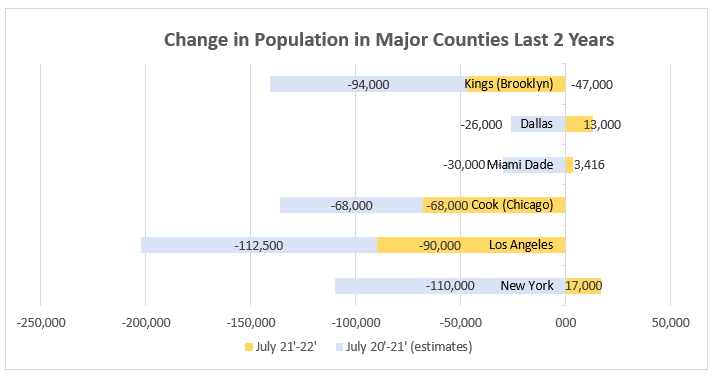New York fails to pass state budget in time
The NYS budget was supposed to come out this week, but it hasn’t come out and it’s not clear when it will be finalized. Though the current deadline is today, it appears that another extension will take hold as disagreements over housing persist. No updates on Good Cause Eviction for now! Still, there’s a swirl of news events affecting the NYC multifamily industry. Here are a few important ones below:
A group of landlords have thrown support behind the Good Cause Eviction Bill. They made their voices heard in a letter of support linked here.
Approximately 104 housing providers who manage 5,000 units have pledged their support to the bill widely seen as hostile to owners of property in New York. The Real Deal has pointed out that the signatories of the letters are not all direct owners who have equity and wealth invested in properties. Some lead organizations that own property. For instance, Michelle de la Uz leads Fifth Avenue Committee (FAC), the non-profit affordable housing developer and manager that has at least 1,900 units existing or in the pipeline to be built in the next few years. Others have pointed out that landlords sponsoring this bill are owners of property that will not be affected, like owner occupied multifamily properties of less than 4 apartments.
The Rent Guidelines Board (RGB) just released new data on the profitability of rent stabilized properties from 2020-2021, during the height of the pandemic.
The research, largely based on the submission of RPIE tax filings, reflects a lot of what is already known, but also offers some interesting nuggets of insight. Manhattan buildings with 80% or more of their units under rent stabilization suffered 18% declines in net operating income (NOI). In the same period, Brooklyn buildings with an equal amount of rent regulated apartments only saw NOI declines of 2.7%. Brooklyn’s decline in profitability is the lowest in NYC, outside of the Bronx, which saw NOI declines of only 1.9%. My theory is that NOI declines were due to high vacancies and subsequent covid deals. But, if fewer tenants left, then there would be fewer covid deals. I think a greater share of Brooklyn & Bronx residents might reside with families and when Covid struck they didn’t have other places outside of NY to dart to. The data also reveals the change in profitability for buildings across the years (page 20) which is interesting. Also, this data has come out 2 years after the period it’s reporting on and that’s far from ideal but it’s based on the data from 14,904 buildings and +695,000 apartments so we can trust it.
Population Changes in NY in relation to other major counties in the U.S
Throngs of people vacated Manhattan in the advent of Covid, but the U.S. Census Bureau’s data suggests that over the last 2 years, Manhattan is far from the biggest loser of people. Los Angeles has lost over 200,000 residents from July 2020-July 2022, followed by Brooklyn and Chicago that saw their populations reduced by approximately 140,000 people. Manhattan hovers around 100,000 people lost. Dallas and Miami stand out as the places workers have migrated to and yet, both places, according to the U.S Census Bureau’s estimates, have slightly fewer people today than pre covid.
Manhattan office vacancy has risen to 16.9% with 470 million square feet of vacant space.
This comes on the heels of an additional 1.5 million square feet of office space coming to market in the first quarter. Rents are flat at $76.96 and heavily buoyed by class A new construction office towers, according to a JLL report cited by Bloomberg news. Rents for Class B and C office buildings are lower.
Sources: The Real Deal, AP News, Bloomberg News, Rent Guidelines Board report



